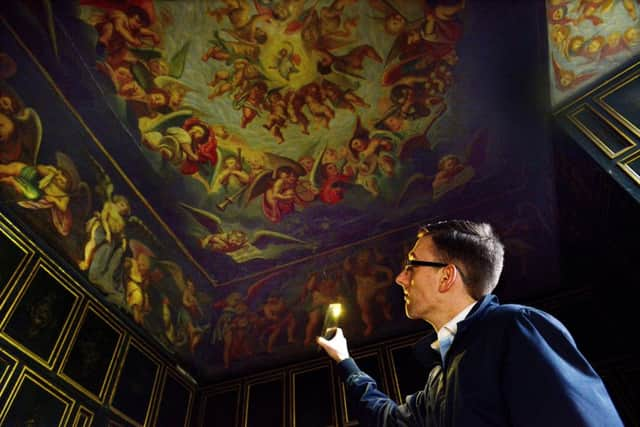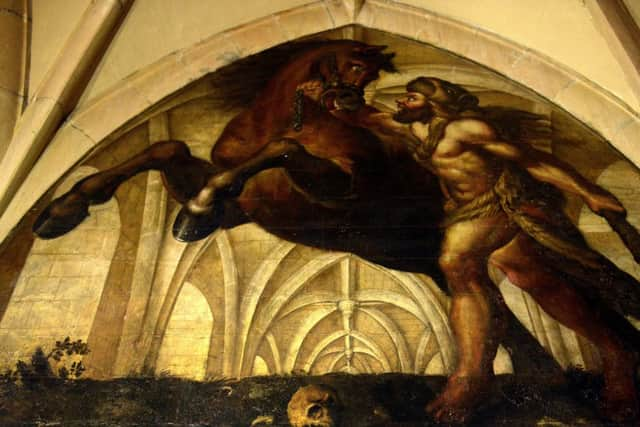Aristocrat who really wanted to be a royal comedian


In an era in which all the world was a stage and an aristocrat could measure his worth by the patrons he courted, the decor at Bolsover Castle may have been the last word in braggadocio.
Perched on a ridge high above the Vale of Scarsdale, on the site of a medieval fortress, the aristocratic retreat of William Cavendish, 1st Duke of Newcastle, is a remarkably-preserved example of not only a patrician’s retreat but also of Jacobean showing-off.
Advertisement
Hide AdAdvertisement
Hide AdThe origin and purpose of the wall paintings inside the tower at Bolsover, known as the Little Castle, have long been a mystery. Painted onto the plaster and on removable panels, they have remained in place since Cavendish commissioned them and are now in the care of English Heritage.


It has taken university researchers to establish that they were probably commissioned for Cavendish, a noted swordsman, politician, architect, diplomat and soldier, to indulge his real passion as an amateur actor.
They believe that the art was used as the basis for a series of private plays and comic sketches arranged for friends and relatives of the Cavendish family on their “pleasure house” retreats from their principal residence at nearby Welbeck Abbey.
Some were inspired and even written for the family by the playwright Ben Johnson, one of Shakespeare’s principal rivals.
Advertisement
Hide AdAdvertisement
Hide AdFragments of script which survive invoke comedy vicars and other characters that would not have seemed out of place on the Dick Emery Show.


In many cases, the characterisations were based on faces and features contained within the wall paintings, and served as “in-jokes” for those sophisticated enough to spot them, said Dr Crosby Stevens, an honorary research fellow from Sheffield University, who led the research.
The sketches were performed for invited guests at banquets and other cultural events – with King Charles I in the audience on at least one occasion.
They took the form of masques, a type of amateur dramatic entertainment popular among the nobility in 16th and 17th-century England, which consisted of dancing and acting performed by masked players, Dr Stevens said.
Advertisement
Hide AdAdvertisement
Hide Ad“The clues were in the paintings themselves,” she said. “Nobody had really studied them in detail so I took the time to look at every one,
“I began to realise that these different little plays and playlets, were almost all comedies which seemed to relate to this kind of amateur theatrical world that these aristocrats were living in – and that some of them actually incorporate peculiar characters and ideas in the paintings.
“They are in-jokes that reference the pictures, and you can imagine that if you stood in particular places, amusing things would happen related to the picture before you.”
Ben Johnson’s 1634 masque, Love’s Welcome at Bolsover, the text of which survives, was the one performed by Cavendish for the King and Queen.
Advertisement
Hide AdAdvertisement
Hide AdHe would have been out to impress his royal guests by securing the best writers and musicians and then performing the show himself, Dr Stevens said.
The paintings were of such importance to him that during his exile in Antwerp during the English civil war, at the home of the artist Peter Paul Rubens, he wrote home to enquire after their welfare, offering to send over a repair painter if necessary.